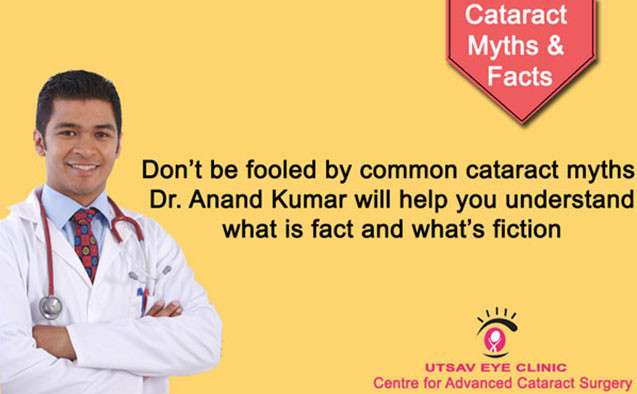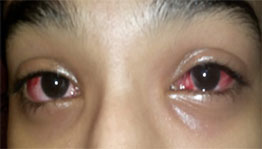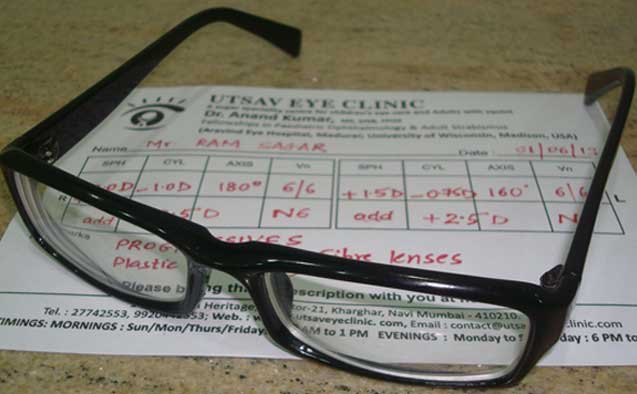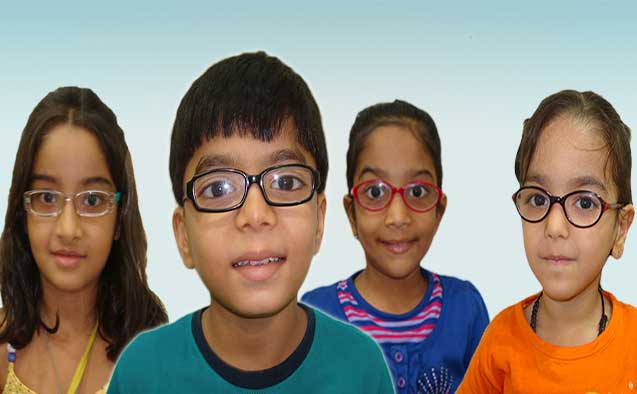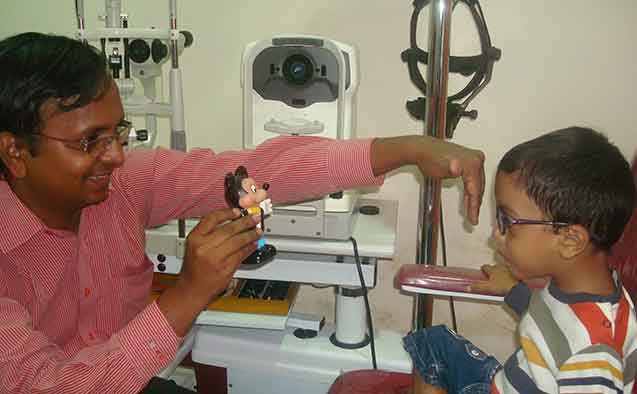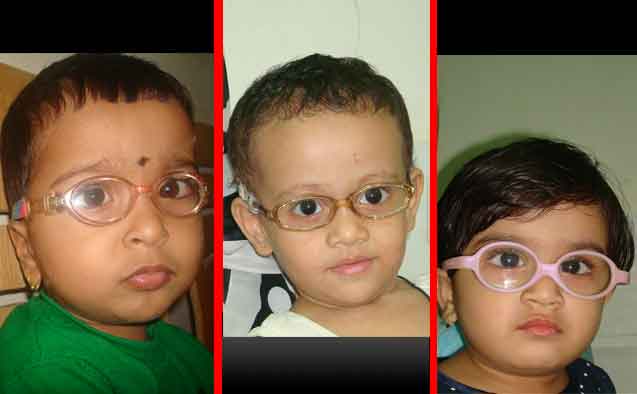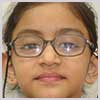Double vision occurs when a person sees a double image where there should only be one. The two images can be side by side, on top of one another, or both.
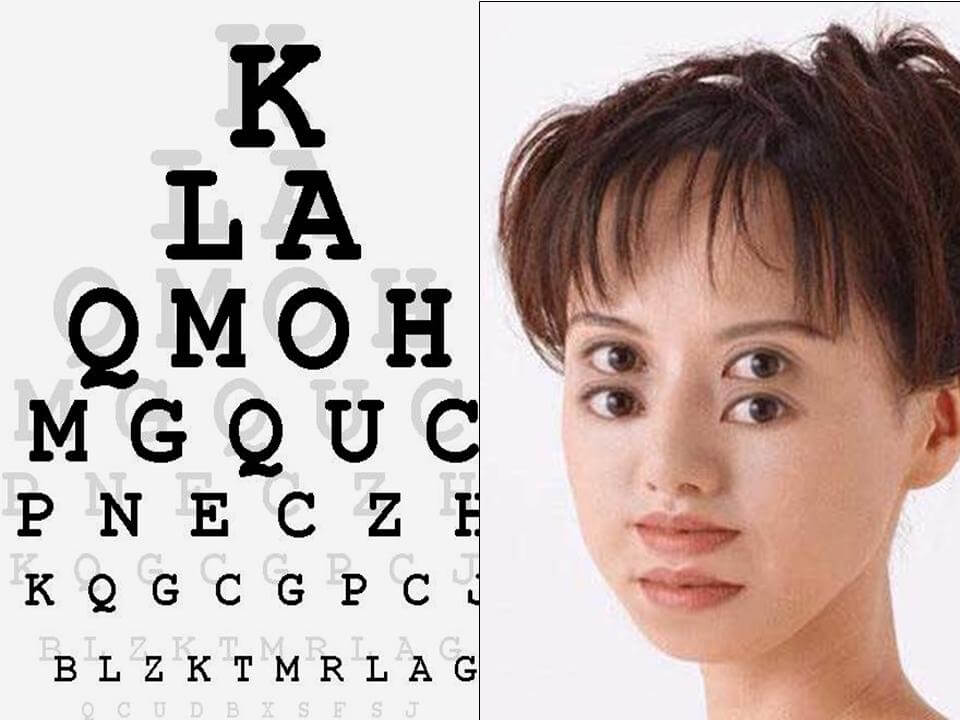
Fast facts on double vision
- Here are some key points about double vision. More detail is in the main article.
- Double vision, or diplopia, can result from a range of underlying conditions.
- Diplopia can affect just one eye or both.
- A childhood squint, or eye turn, can sometimes recur and cause double vision.
- Temporary double vision can be caused by alcohol or other recreational drugs.
- Treatments can include surgery, eye exercises, or corrective lenses.
Causes:-
Nerve or muscle damage in the eye might cause double vision.
Each eye creates its own image of the environment. The brain combines the representations from each eye and perceives them as one clear picture.
Damage to the muscles that move the eyes or the nerves that control eye movement can create a double image.
The eyes must work together to create depth of field.
Certain illnesses can weaken the muscles moving the eyes and produce double vision.
Causes of binocular double vision:-
A common cause of binocular double vision is a squint or strabismus.
Thyroid dysfunction:
- Stroke or transient ischemic attack (TIA).
- Aneurysm:
- Convergence insufficiency
- Diabetes:
- Myasthenia gravis
- Multiple sclerosis
- Black eye
- Head injury
Causes of monocular double vision:-
- Astigmatism
- Dry eye
- Keratoconus
- Retinal abnormalities
- Cataracts
Temporary double vision:-
Double vision can sometimes be temporary. Alcohol intoxication, benzodiazepines, opioids, or certain medications for seizures and epilepsy sometimes cause this. Head injuries, such as concussions, can also cause temporary double vision.
Diagnosis:-
Diagnosing double vision can be challenging for an eye specialist because there are so many possible causes.The specialist will start by asking whether the double vision is monocular or binocular.
If the double vision is monocular, it means that the problem is more likely to be within the eye, rather than in the nerves. It is likely to be less serious.
Diagnosis in children
Children cannot always express what they see, and this can make diagnosis difficult.
Physical signs of double vision include:
- squinting or narrowing the eyes to see
- covering one eye with their hand
- turning their head in an unusual way
- looking at objects from the side rather than facing forward
- flicking eyes side to side, between images
Treatment:-
This will depend on the underlying cause.
Visit your Doctor
Dr. Anand Kumar
Utsav Eye Clinic
More
Diabetic retinopathy is a diabetes complication that affects eyes. It’s caused by damage to the blood vessels of the light-sensitive tissue at the back of the eye (retina).
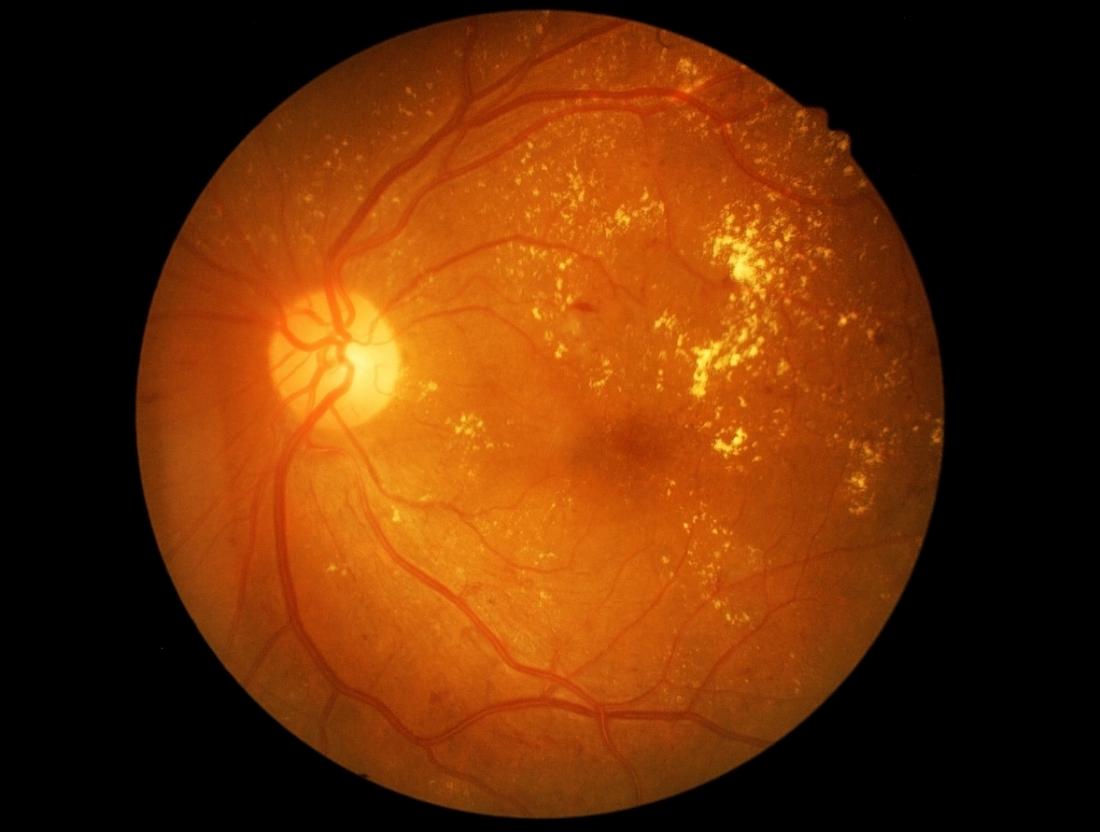
At first, diabetic retinopathy may cause no symptoms or only mild vision problems. Eventually, it can cause blindness.
The condition can develop in anyone who has type 1 or types 2 diabetes. The longer you have diabetes and the less controlled your blood sugar is, the more likely you are to develop this eye complication.
Symptoms
You might not have symptoms in the early stages of diabetic retinopathy. As the condition progresses, diabetic retinopathy symptoms may include:
-Spots or dark strings floating in your vision (floaters)
-Blurred vision
-Fluctuating vision
-Impaired color vision
-Dark or empty areas in your vision
-Vision loss
-Diabetic retinopathy usually affects both eyes.
When to see a doctor
Careful management of your diabetes is the best way to prevent vision loss. If you have diabetes, see your eye doctor for a yearly eye exam with dilation — even if your vision seems fine. Pregnancy may worsen diabetic retinopathy, so if you’re pregnant, your eye doctor may recommend additional eye exams throughout your pregnancy.
Contact your eye doctor right away if your vision changes suddenly or becomes blurry, spotty or hazy
Causes
Over time, too much sugar in your blood can lead to the blockage of the tiny blood vessels that nourish the retina, cutting off its blood supply. As a result, the eye attempts to grow new blood vessels. But these new blood vessels don’t develop properly and can leak easily.
There are two types of diabetic retinopathy:
(1)Early diabetic retinopathy.
(2)Advanced diabetic retinopathy
Risk factors
Anyone who has diabetes can develop diabetic retinopathy. Risk of developing eye condition can increase as a result of:
Duration of diabetes — the longer you have diabetes, the greater your risk of developing diabetic retinopathy
-Poor control of your blood sugar level
-High blood pressure
-High cholesterol
-Pregnancy
-Tobacco use
Complications
Diabetic retinopathy involves the abnormal growth of blood vessels in the retina. Complications can lead to serious vision problems:
-Vitreous hemorrhage.
-Retinal detachment.
-Glaucoma
-Blindness
Prevention
You can’t always prevent diabetic retinopathy. However, regular eye exams, good control of your blood sugar and blood pressure, and early intervention for vision problems can help prevent severe vision loss.
If you have diabetes, reduce your risk of getting diabetic retinopathy by doing the following:
-Manage your diabetes.
-Monitor your blood sugar level.
-Ask your doctor about a glycosylated hemoglobin test.
-Keep your blood pressure and cholesterol under control.
-If you smoke or use other types of tobacco, ask your doctor to help you quit
-Pay attention to vision changes.
Remember, diabetes doesn’t necessarily lead to vision loss. Taking an active role in diabetes management can go a long way toward preventing complications.
Treatment: If you have retinopathy you’ll need prompt surgical treatment. Depending on the specific problems with your retina, options may include Photocoagulation.
or Visit Utsav Eye Clinic
Utsav Eye Clinic: Eye Clinic in Kharghar | Eye Specialist Doctor
More
Monsoon brings joy as you say goodbye to summer – and your sunglasses (remember, they also protect your eyes from infection). Monsoons bring with them an army of infections that cause eye pain and discomfort, so don’t ignore your eye health this monsoon. Viral infections are known to thrive and spread during rains due to increased moisture in the air.
Proper eye care should become a priority during monsoons to help protect from infections like conjunctivitis, stye, dry eyes and corneal ulcers which can lead to blindness.
 By Dr. Anand Kumar the precautions, you can take during monsoons to maintain good eye health.
By Dr. Anand Kumar the precautions, you can take during monsoons to maintain good eye health.
1)Precautions are usually based on hygiene. Avoid touching your eyes with dirty hands.
2)Ask your children to not touch their eyes.
3)If you (or someone around you) suspect you’ve got or are getting conjunctivitis, wash your eyes gently and use a cold compress. The best thing would be to see a doctor.
4)If someone at home is down with conjunctivitis, wash your hands after administering drops.
5)Redness, irritation & itching are common monsoon-related problems, especially after too much reading, long hours at the computer or watching too much television, and most hospitals treat such problems with lubricating eye drops. However, if you have such a problem, don’t self-medicate – ask a doctor.
6)Avoid sharing your towel and similar personal items with others, because infections mostly spread through hands, clothes and other commonly touched items.
7)A stye is a common eye infection that occurs during monsoons and is caused due to bacteria. It manifests as a painful lump along the eyelid and is normally treated with the help of a warm compress, though a visit to the doctor is highly recommended.
8)In the case of red-eye, avoid over-the-counter eye drops as they may contain steroids which can be harmful, and seek expert advice. Also, avoid using a contact lens during this period.
9)Wearing glasses when traveling helps.
10)Avoid roadside food.
11)Always wash your hands after coming from outside.
12)Try to keep children away from puddles and waterlogged areas. Children often like to have fun in or around such places but they are high bacteria prone.
Utsav Eye Clinic
Dr. Anand Kumar
https://utsaveyeclinic.com/
More
Five most common Cataract Surgery Myths
We often get asked various questions by patients visiting our Clinic about cataracts, how they develop, the cost of Cataract Surgery, the treatment for “getting rid” of them and the recovery period required after surgery. Here are our five most common myths surrounding cataracts and the facts as uncovered by our Cataract Specialist in Kharghar Navi Mumbai, Dr Anand Kumar.
Myth 1: Eye drops can get rid of cataracts
FACT: Pharmaceutical companies promote many eye drops as cure for cataract. However there is no good evidence from clinical studies that any eye drop can cure cataracts to date. The only proven treatment for cataracts is Cataract Removal.
Myth 2: Cataracts are reversible
FACT: Cataracts occur due to age related changes in your natural lens. These changes are not reversible with time, drops or tablets. The only way to treat cataracts is to remove the cloudy lens with surgery and replace it with a clear artificial lens called as intra-ocular lens (IOL).
Myth 3: Cataracts must be ripe before operating on them
FACT: This myth may have arisen from the fact the cataract surgery was more risky in the past. The risk may not have been taken because of the potential complications of cataract surgery. Thankfully cataract surgery is far safer nowadays and we can safely operate on patients who have symptoms – however mild or severe. Waiting for cataracts to ripen or mature may actually make cataract surgery more technically challenging and potentially more risky, so it’s not a normal practice to wait for the cataracts to ripe.
Myth 4: Recovery after Cataract Surgery takes months
FACT: With the latest technology and advanced surgical techniques, cataract surgery recovery has been dramatically reduced. It is true that in the past cataract patients were admitted for a week before surgery, their surgical time could be more than an hour and the recovery time was spent in hospital for many days. The main reasons why we don’t have to do this anymore, is that our skills and technology are more advanced now, the wounds we create are much smaller without the need for stitches and our dramatic reduction in infection rates due to preventative antibiotics that are placed in the eye at the end of cataract surgery. At Utsav Eye Clinic, we practice No injection, No pad technique for cataract surgery which makes the surgery even more comfortable and safe.
Myth 5: Only old people develop cataracts
FACT: While it is true that if most people live long enough, they will eventually get cataracts, not all people with cataracts are greater than 60 years of age. Cataracts are seen in all age groups – even newborns born with congenital cataracts. Nowadays even younger people are getting cataracts, maybe due to our changing lifestyles. Take our FREE Cataract self assessment test to find out if you have cataracts.
Make an appointment with our Cataract Specialist in Kharghar Navi Mumbai by filling the adjoining form or call us on 022-27742553, 9920442553.
More
Viral Conjunctivitis or “Sore Eyes”
(Epidemic KeratoConjunctivitis, EKC)
Everything you need to know
What is Viral Conjunctivitis?
Viral Conjunctivitis is an inflammation (swelling) of the conjunctiva (the outermost transparent covering of the white of the eye and the inside of the eyelids) in the eye. This inflammation may lead to redness, tearing, discharge, itching, and pain.
How does Viral Conjunctivitis spread?
Viral Conjunctivitis epidemics tend to occur in closed institutions (eg, schools, hospitals, camps, nursing homes, workplaces).
Direct contact with eye secretions is the major mode of transmission. This can happen by touching the hands of someone with the infection, or by touching contaminated surfaces or objects.
Other possible methods of transmission are air droplets and possibly swimming pools. The virus causing the infection can be recovered from the eye and throat for as long as 14 days after the onset of clinical symptoms.
What are the symptoms of Viral Conjunctivitis?
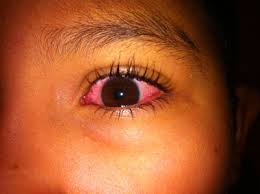 Typically, patients initially complain of an increasingly severe gritty sensation in one eye, starting from the nasal corner of the eye and spreading laterally. This is followed by marked lid swelling, tearing, itching, increased light sensitivity, and blurred vision. Similar, but usually much milder, manifestations commonly appear in the other eye in two to seven days.
Typically, patients initially complain of an increasingly severe gritty sensation in one eye, starting from the nasal corner of the eye and spreading laterally. This is followed by marked lid swelling, tearing, itching, increased light sensitivity, and blurred vision. Similar, but usually much milder, manifestations commonly appear in the other eye in two to seven days.
The severity of Viral Conjunctivitis ranges from subclinical conjunctivitis to very severe disease with bacterial superinfection and with marked systemic symptoms such as generalized weakness and pain in the limbs. The involvement of the second eye is often so mild as to go unnoticed. A small painful lump in front of the ears may arise in some patients.
How can Viral Conjunctivitis be prevented?
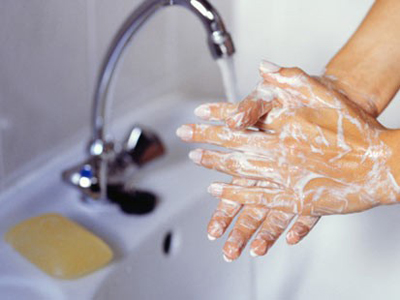 To avoiding spreading Viral conjunctivitis (EKC), patients should be very careful not to touch others and not to share tissues, towels, or handkerchiefs and to wash their hands frequently as long as the eye is red. In fact, Hand washing by patients and their contacts has been considered the most effective measure for preventing transmission of the microorganism.
To avoiding spreading Viral conjunctivitis (EKC), patients should be very careful not to touch others and not to share tissues, towels, or handkerchiefs and to wash their hands frequently as long as the eye is red. In fact, Hand washing by patients and their contacts has been considered the most effective measure for preventing transmission of the microorganism.
Children who are suffering from this infection should stay home from school until symptoms have resolved or until cleared by a doctor.
Patients who have Viral Conjunctivitis should follow the below mentioned measures religiously
- They should avoid touching their eyes whenever possible. If they do touch their eyes, they need to wash hands thoroughly with soap and running water
- They should use disposable tissues to wipe their eyes, blow their nose, sneeze or cough.
- Patients should avoid touching other people un necessarily
- They should throw away or carefully wash items (in hot water and detergent) that touch their eyes
- They should not share eye makeup or other items used on the eyes (e.g., towels, tissues, eye drops, eye medications)
- Use a separate towel and face cloth for each member of the household
- Cover your mouth and nose when coughing or sneezing.
How is Viral Conjunctivitis treated?
There is no definitive treatment available for viral conjunctivitis. It is a self resolving condition in most cases and goes away in about 1-2 weeks. Treatment is aimed to relieve the symptoms and prevent added super infection. Avoid self medication and use of over the counter medicines. Some of these medicines may do more harm than good.
More
By Andy
23 Oct, 2014
Children Eye Care, Comprehensive Ophthalmology
Airoli, astigmatism, axis, CBD Belapur, cylinder, diopters, farsightedness, glasses, hyperopia, India, Kalamboli, Kamothe, kharghar, Mansarovar, myopia, navi mumbai, Nerul, New Panvel, Panvel, prescription, Sanpada, Seawoods, shortsightedness, spectacles, Vashi
Learn about your Glasses prescription
Glass prescription can be difficult to understand, especially when no one else in the family has worn glasses before. Most patients are puzzled by the ‘signs’ and ‘numbers’ on the glass prescription and would want to ask a lot of questions regarding it to the doctor, but are either too “shy” or they are gently “shoved out” of the consulting room for want of the doctor’s time.
This post will tell you most of the things that you need to know about your glass prescription.
But before that, let us review the common refractive error conditions.
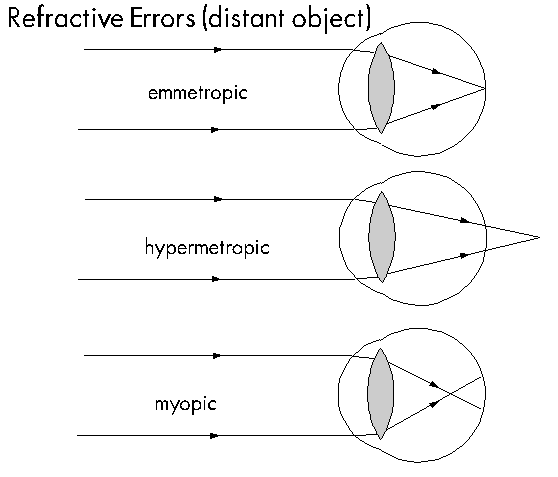 Farsightedness (Hyperopia)
Farsightedness (Hyperopia)
Farsightedness, or hyperopia, as it is medically termed, is a vision condition in which distant objects are usually seen clearly, but close ones do not come into proper focus. Farsightedness occurs if your eyeball is too short or the cornea has too little curvature, so light entering your eye is not focused correctly.
Nearsightedness (Myopia)
Nearsightedness, or myopia, as it is medically termed, is a vision condition in which close objects are seen clearly, but objects farther away appear blurred. Nearsightedness occurs if the eyeball is too long or the cornea, the clear front cover of the eye, has too much curvature. As a result, the light entering the eye isn’t focused correctly and distant objects look blurred.
Astigmatism
Astigmatism is a vision condition that causes blurred vision due either to the irregular shape of the cornea, the clear front cover of the eye, or sometimes the curvature of the lens inside the eye. An irregular shaped cornea or lens prevents light from focusing properly on the retina, the light sensitive surface at the back of the eye. As a result, vision becomes blurred at any distance.
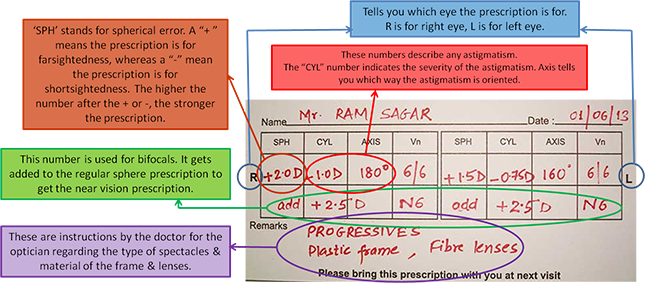
Sphere
Sphere, often abbreviated as “sph” is the spherical refractive error, or nearsightedness or farsightedness. The first part of this number will be a plus or minus sign:
+ : farsighted, or longsighted prescription: hyperopia.
– : nearsighted, or shortsighted prescription: myopia.
0, Pl, or Plano : no error
How bad is the spherical prescription?
The number is in “diopters” but you don’t need to know too much about that, it’s a measure of how much the curvature of the eye is off from normal. Basically, the higher the number (ignoring the plus or minus), the worse the prescription.
Myopia (-)
0.00 to -3.00 : mild myopia
-3.00 to -6.00 : moderate myopia
-6.00 and higher : high myopia
Hyperopia (+)
0.00 to +2.25 : mild hyperopia
+2.25 to +5.00 : moderate hyperopia
+5.00 and higher : high hyperopia
Cylinder
Cylinder is the measure of astigmatism. Astigmatism is when there’s an irregular shape to the cornea, often described as a football shape. It causes blurriness at any distance. There are two measurements that go along with astigmatism, the first, cylinder, is a measure of how severe the astigmatism is.
How bad is the cylinder prescription?
Like the spherical error, the cylinder number is measured in diopters. The thing you want to pay attention to is the number. It may be written as a plus or a minus, but that doesn’t actually make any difference in how bad the prescription is. The higher the number after the plus or minus, the more severe the astigmatism.
0.00 to 1.00 : mild astigmatism
1.00 to 3.00 : moderate astigmatism
higher than 3.00 : severe astigmatism
Axis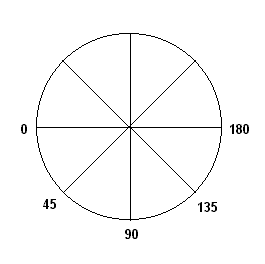
The axis tells you which way the astigmatism is oriented on your child’s eye
If you think of astigmatism as a football shape, it makes sense that the football might be turned any direction. The axis number then, tells you the orientation of the astigmatism. The number is in degrees, it doesn’t have anything to do with how severe the astigmatism is, just how it is situated on your or your child’s eye.
Add
If you or your child needs bifocals, you will likely see a number here. This tells you how the prescription should be changed for close up. Let’s say your child has a regular glasses prescription of +3.00, if the add number is +1.00, then the near distance prescription will be +3.00 + 1.00, which equals +4.00 (3+1=4). In the same vein, if your child is nearsighted, say -4.00, but has an add of +2.00, then the near distance part of the bifocals will have a prescription of -4.00 + 2.00, which equals -2.00.
Sometimes, you don’t have an “Add” part of the prescription, and instead you’ll just see a prescriptions for distance vision and a separate prescription for near vision.
Hope you got to learn something about your Glasses prescription. Please click on the LIKE button below to help your friends also read this.
Please do not hesitate to contact us for any queries or feedback.
Adapted from littlefoureyes
More
By Andy
23 Oct, 2014
Children Eye Care, Uncategorized
Airoli, CBD Belapur, child eye doctor, child eye specialist, children, children eye doctor, children eye specialist, far-sightedness, glasses, hypermetropia, hyperopia, India, Kalamboli, Kamothe, kharghar, Mansarovar, myopia, navi mumbai, Nerul, New Panvel, Panvel, Sanpada, Seawoods, short-sightedness
Getting the glasses to stay on
Many Eye specialist doctors will tell you that once your child realizes that they see better with their glasses, they’ll be much more likely to leave them on, and even ask for them first thing in the morning. And that’s true, but the trick is getting through that initial stage when they don’t want these funny things sitting on their face.
Every child is different, some will take to their glasses immediately, while others fight tooth and nail for months. A recent poll shows that about 65% children were wearing them well in a week or less, but more than 15% of the kids take longer than a month before they’ll wear them reliably. Odds are your child will surprise you and take to their glasses quickly, but if they don’t, know that you’r not alone in your struggles.
While there are a lot of strategies to get your child to leave their glasses on, the key seems to be to stay calm and positive (which is easier said than done) and consistent about keeping them on (ok, this is also easier said than done). When your child takes them off, put them back on with a smile, but don’t make a big deal about it. If they are really fighting or upset, set the glasses to the side for a few minutes until your child calms down and try again. You’ll also want to have activities on hand when you put those glasses on. Boredom and glasses do not mix!
The following strategies have been suggested by parents of our kid patients who needed to wear glasses. They may help you in your struggle to make your children keep on their glasses too.
- Talk about how nice he or she looks in the glasses.
- When putting glasses on your child, do it with a smile. “While we were trying glasses on Palak, she was crying and we were getting upset, too, and we kept apologizing to her. Dr. Kumar recommended that instead, we show her how happy we are when we put glasses on her (even when we aren’t). It didn’t completely stop her crying, but she definitely calmed down a notch once we started acting happier” says Mrs. Shah, the mother of a 7 year cheerful girl residing in Kharghar.

- Show them glasses-wearing characters (like Arthur, or Harry Potter for older kids). This helps them accept the glasses by making them less self-conscious.
- If your child keeps taking off their glasses, simply put them back on with a smile. If they don’t let you put them on, don’t make a big deal, simply set them aside and try again in a few minutes. “It took about 2 weeks for Zeeshan to get to a point where he leaves the glasses on most of the time” says Mrs. Chaudhary, a resident of Nerul, Navi Mumbai.
- Most kids, especially teenagers are conscious about their looks particularly in front of their school mates. Hence it may be a good idea to speak to the class teachers and close friends and ask them to appreciate the child’s new look.

- When she put on her pair of glasses, I rewarded her with her favorite cookies and explained that each times she wears her glasses we’ll show her how proud we are by giving her a cookie. She seems motivated by this and put them on 4 more times before dinner.
- Take off your child’s glasses when they’re in the car – at least at the beginning. It’s likely they’ll take off their glasses and throw them somewhere where they might fall out of the car or get smushed when you open the door.
- Mrs. Tawade of New Panvel thinks the reward system works best for most kids. She says “We bribed him with a new Thomas toy if he would put them on and leave them alone, so he did, and Daddy let him pick out the most expensive Thomas set that the store had.”
We wish you the best in your efforts to make your child keep their glasses on. If you have any strategy that has worked for you, kindly share it with us for the benefit of other parents.
More
Why do I need to see a Paediatric Eye Doctor in Navi Mumbai?
The American Academy of Paediatrics states that “Children are not just small adults. They cannot always say what is bothering them. They cannot always answer medical questions, and are not always able to be patient and cooperative during a medical examination.” The examination techniques used to examine the eyes in adults do not work well with kids. Paediatric Eye Doctor in Navi Mumbai.
 Paediatric ophthalmologists (Children Eye Care doctors or Paediatric Eye doctors) know how to examine and treat children in a way that makes them relaxed and cooperative. In addition, paediatric ophthalmologists use equipment specially designed for children. Most paediatric ophthalmologists’ clinics are arranged and decorated with children in mind. This helps create a comfortable and joyful environment for your child. Our examination room at Utsav Eye Clinic, Kharghar, Navi Mumbai are child-friendly and are designed to make your child relaxed while we conduct the eye examination in a breeze. Dr Kumar of Utsav Eye Clinic is one of the few fellowship trained Paediatric Eye Doctor in Navi Mumbai.
Paediatric ophthalmologists (Children Eye Care doctors or Paediatric Eye doctors) know how to examine and treat children in a way that makes them relaxed and cooperative. In addition, paediatric ophthalmologists use equipment specially designed for children. Most paediatric ophthalmologists’ clinics are arranged and decorated with children in mind. This helps create a comfortable and joyful environment for your child. Our examination room at Utsav Eye Clinic, Kharghar, Navi Mumbai are child-friendly and are designed to make your child relaxed while we conduct the eye examination in a breeze. Dr Kumar of Utsav Eye Clinic is one of the few fellowship trained Paediatric Eye Doctor in Navi Mumbai.
Paediatric ophthalmologists are medical doctors who have had
• Four and half years of medical school (MBBS)
• One year of medical or surgical internship
• Three additional years of residency training in ophthalmology (MS)
• One and half additional year of fellowship training in paediatric ophthalmology (FPOS)
• Dr. Anand Kumar has also undergone an advanced fellowship training at the University of Wisconsin, Madison, USA in speciality of paediatric ophthalmology and strabismus (FPOS).
Paediatric Eye Doctors have expertise to treat the following eye conditions:
- Amblyopia (lazy eye)
- Blocked tear ducts
- Cataracts
- Conditions requiring oculoplastic surgery
- Conditions requiring vision therapy evaluation
- Congenital cranial dysinnervation disorders
- Eye tumors
- Hemangiomas and lymphangiomas of the eye and orbit
- Infections and inflammations of the eye and orbit
- Neuro-ophthalmological conditions
- Pediatric corneal disease
- Pediatric / juvenile glaucoma
- Ptosis (droopy eyelids)
- Refractive errors (glasses in children)
- Retina disorders that lead to vision loss
- Retinoblastoma
- Retinopathy of prematurity
- Strabismus (misaligned or crossed eyes)
- Strabismus caused by thyroid disease, stroke, injuries and cancer
- Strabismus in adults
- Tearing eyes
- Traumatic eye injuries
To know more about our Child Eye care and squint specialist at Utsav Eye Clinic, Kharghar click here.
More
Glasses in children
Having trouble selecting the “right” glasses for your kids?
Read these tips before making up your mind.
- It is especially important for children’s eyeglasses to stay in place, because when eyeglasses slide down the nose, kids tend to look over the tops of the lenses instead of pushing them back up where they belong.
-
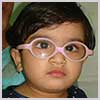 Plastic or Metal Eyeglass Frames?
Plastic or Metal Eyeglass Frames?
Plastic used to be and still is the recommended material for kids’ glasses. It is considered to be more flexible, yet sturdier, and the perfect choice for frames on an active child. Though metal eyeglass frames, or “wire frames” as they are often called, have gotten a bad rap in the past, today’s glasses are made tough to handle the abuse that children give them. There are several types of metal eyeglass frames for kids, including Monel, Stainless Steel, Aluminum, Nickel Silver, and Titanium. These metals can be formed into stylish, yet lightweight frames. In order to properly choose the best temples for your kid’s glasses, the temples should actually wrap around their ears.
- And finally, if your child needs to wear eyeglasses all the time to see, it would be a good idea to check into purchasing a second pair to use as a spare.
When in doubt about a frame’s fit, do not hesitate to consult the optician.
They would be able to answer your queries regarding glasses in children.
More
Follow these tips to ensure healthy eyes for your children.
 1. Diet: A normal balanced diet comprising of red and green leafy vegetables like spinach, carrots, beetroot and yellow fruits including mango and papaya which are rich in carotene (A precursor of Vitamin A) should be consumed by children for healthy eyes.
1. Diet: A normal balanced diet comprising of red and green leafy vegetables like spinach, carrots, beetroot and yellow fruits including mango and papaya which are rich in carotene (A precursor of Vitamin A) should be consumed by children for healthy eyes.
2. TV Viewing: Television should be watched at a proper viewing distance of 3.5 meter or more in a well-lighted room. The bigger the TV, the further away your child should sit.
 3. Computer Usage: the child should be encouraged to use it judiciously in order to reduce eye fatigue. Computer screen should be slightly lower than the eye level. Encourage your child to take a break after 30-40 minutes of near work such as reading, writing or computer work. Your child should look at distant objects for 3 to 5 minutes. They could look out of the window into the distance.
3. Computer Usage: the child should be encouraged to use it judiciously in order to reduce eye fatigue. Computer screen should be slightly lower than the eye level. Encourage your child to take a break after 30-40 minutes of near work such as reading, writing or computer work. Your child should look at distant objects for 3 to 5 minutes. They could look out of the window into the distance.
4. Playing games on the mobile: phones should be restricted because of the less form factor and the resolution.
5. Lighting: One should have a light source behind or from the side while studying. Books should be held at about 14 inches distance.
6. Outdoor activities: Protective eye wear is recommended for children involved in contact sports. Encourage children to spend more time on outdoor activities like ball games, walks in the park or a family picnic at the beach, as there is emerging evidence that outdoor activities may delay the onset or progression of myopia in your child.
8. Allergic Conjunctivitis is frequently seen in school age, children should be discouraged from rubbing their eyes since it aggravates the allergic process, In addition, due vigilance has to be paid to eye hygiene. Children should not touch their eyes with dirty hands
9. Certain practices like application of Kajal to new-borns and washing eyes with rosewater is an absolute NO-NO.
10. Take your child for eye checkups yearly
Click here to Read more about Utsav Eye Clinic.
More



 By
By 